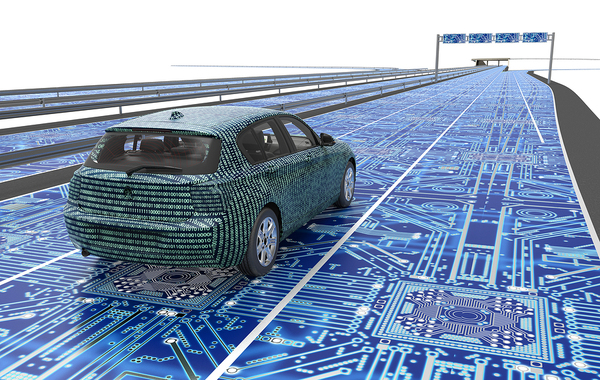It appears likely that the future will see some form of an automated car. In one technology news scenario, people will be using entirely self-driving cars, while the person in what is now the driver’s seat will be free to text or read as he or she travels. For the moment though, we have to stay content with leasing vehicles that we still to drive ourselves from places like Intelligent Car Leasing while we wait for automation to come in to place.

Driving decisions in the future are likely to be made by computers rather than drivers.
In another scenario, cars will simply become automated to the point that, while the person in the driver’s seat still drives, digital systems in the car will be making a large percentage of the decisions. What route to take, for example, will be set by the sensing of traffic patterns. The speed and driving practices will be determined by the car, in digital consultation with laws, road signs, and optimal driving patterns. This means insurance companies like cheapautoinsurance.co and many others will have to redesign what is meant by insurance and what it will be for.
The introduction of the automobile in the twentieth century had a huge impact on American life. It created an entire industry, of course, in Detroit-based car manufacturing. It also created the conditions for the expansion of the suburbs after World War II, expanded job and educational mobility, and even had a marked impact on demography.
Once people could drive, they didn’t need to live close to their workplaces. They could seek jobs in relatively distant locations and commute to colleges and training programs.
Change Is Likely
So it’s likely automated cars, in whatever form, will also cause massive change.
Many observers predict that self-driving cars will cause a move toward shared, on-demand vehicles. Rather than individual private ownership of vehicles, consumers may elect to simply summon a car when they need transportation.
Scenarios vary about who will own these summoned vehicles. Ideas from a municipal system, much like current public transportation, to an app-based Uber-like system, have been floated.
A summoned car can simply be sent back to from whence it came once the trip is over. There is no need for it to park. As a result, the overall space devoted to parking lots and parking garages is likely to shrink a great deal.
Furthermore, for automated cars, it is uncertain how the age old question of ‘does a 0-62 even mean anything?’ will apply. Will this measure of how fast, in seconds, a vehicle takes to reach 62 mph from a complete stop, still matter if no driver intervention is necessary?
A Boost to Economies
Although some observers have pointed out that automated vehicles could lead to job losses for the estimated five million people who drive vehicles for a living, Wired reports that, in fact, vehicle automation is expected to add significantly to economies worldwide. Citing data from Intel and Strategy Analytics, Wired notes that vehicle automation is anticipated to add $7 trillion in revenue around the world and $2 trillion to the U.S. specifically.
The market will shift from the current focus on the provision of the automobile itself to the provision of mobility as a service. New business strategies will locate value in mobility as a service.
Mobility as a service, for example, will present many new opportunities for data capture. Theoretically, where consumers are and what they are doing can be mined.
Opportunities for mechanics and service technicians will continue and, perhaps, increase, as self-driving cars will still need to be maintained.
Information technology in cars will double from current levels, so IT automotive professionals will be needed just as they are for computers today.
Whatever direction the automated car goes, whether self-driving or simply highly augmented vehicles, it is likely to exert large changes down the road.
